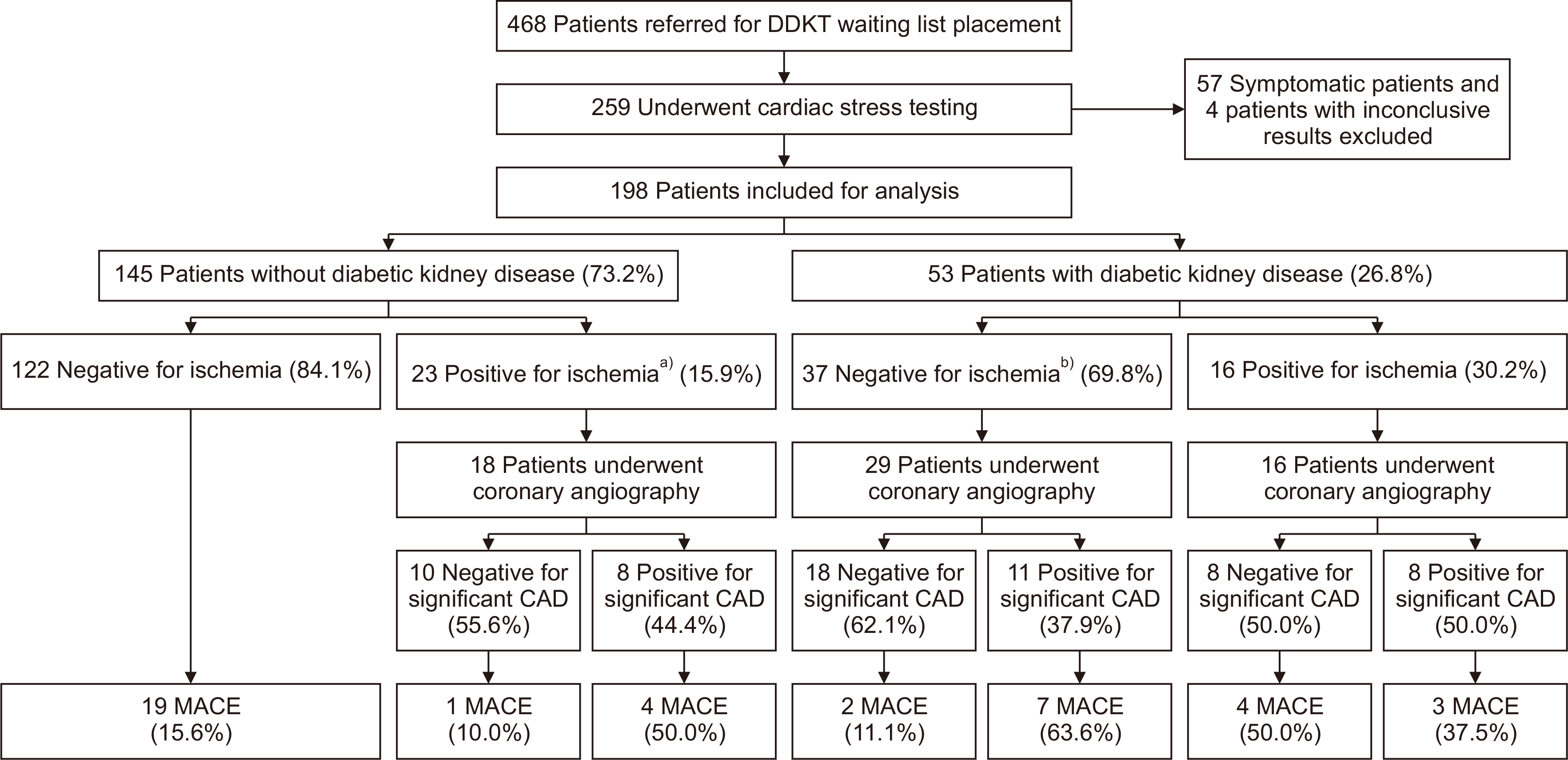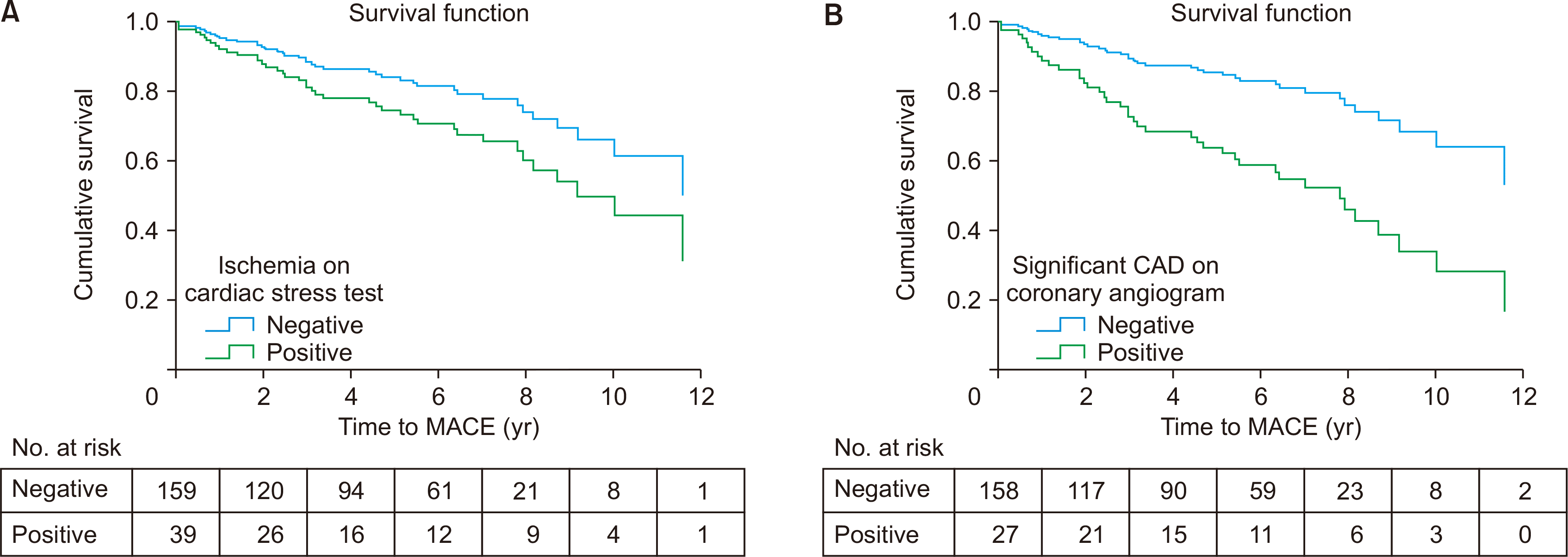1. United States Renal Data System (USRDS). 2020. 2020 USRDS annual data report: epidemiology of kidney disease in the United States [Internet]. USRDS;Bethesda: Available from:
https://adr.usrds.org/2020/. cited 2022 Jun 22.
2. Khoo CY, Gao F, Choong HL, Tan WX, Koniman R, Fam JM, et al. 2022; Death and cardiovascular outcomes in end-stage renal failure patients on different modalities of dialysis. Ann Acad Med Singap. 51:136–42. DOI:
10.47102/annals-acadmedsg.20219. PMID:
35373236.
3. Lentine KL, Costa SP, Weir MR, Robb JF, Fleisher LA, Kasiske BL, et al. 2012; Cardiac disease evaluation and management among kidney and liver transplantation candidates: a scientific statement from the American Heart Association and the American College of Cardiology Foundation: endorsed by the American Society of Transplant Surgeons, American Society of Transplantation, and National Kidney Foundation. Circulation. 126:617–63. DOI:
10.1161/CIR.0b013e31823eb07a. PMID:
22753303.
4. Chadban SJ, Ahn C, Axelrod DA, Foster BJ, Kasiske BL, Kher V, et al. 2020; KDIGO clinical practice guideline on the evaluation and management of candidates for kidney transplantation. Transplantation. 104(4S1 Suppl 1):S11–103. DOI:
10.1097/TP.0000000000003136. PMID:
32301874.
5. Sharif A. 2020; The Argument for abolishing cardiac screening of asymptomatic kidney transplant candidates. Am J Kidney Dis. 75:946–54. DOI:
10.1053/j.ajkd.2019.05.033. PMID:
31492488.
6. Gill JS, Ma I, Landsberg D, Johnson N, Levin A. 2005; Cardiovascular events and investigation in patients who are awaiting cadaveric kidney transplantation. J Am Soc Nephrol. 16:808–16. DOI:
10.1681/ASN.2004090810. PMID:
15689406.
7. Welsh RC, Cockfield SM, Campbell P, Hervas-Malo M, Gyenes G, Dzavik V. 2011; Cardiovascular assessment of diabetic end-stage renal disease patients before renal transplantation. Transplantation. 91:213–8. DOI:
10.1097/TP.0b013e3181ff4f61. PMID:
21048531.
8. Bangalore S, Maron DJ, O'Brien SM, Fleg JL, Kretov EI, Briguori C, et al. 2020; Management of coronary disease in patients with advanced kidney disease. N Engl J Med. 382:1608–18. DOI:
10.1056/NEJMoa1915925. PMID:
32227756. PMCID:
PMC7274537.
10. Wolfe RA, Ashby VB, Milford EL, Ojo AO, Ettenger RE, Agodoa LY, et al. 1999; Comparison of mortality in all patients on dialysis, patients on dialysis awaiting transplantation, and recipients of a first cadaveric transplant. N Engl J Med. 341:1725–30. DOI:
10.1056/NEJM199912023412303. PMID:
10580071.
11. Leonardi G, Tamagnone M, Ferro M, Tognarelli G, Messina M, Giraudi R, et al. 2009; Assessment of cardiovascular risk in waiting-listed renal transplant patients: a single center experience in 558 cases. Clin Transplant. 23:653–9. DOI:
10.1111/j.1399-0012.2009.01018.x. PMID:
19563485.
12. Patel RK, Mark PB, Johnston N, McGeoch R, Lindsay M, Kingsmore DB, et al. 2008; Prognostic value of cardiovascular screening in potential renal transplant recipients: a single-center prospective observational study. Am J Transplant. 8:1673–83. DOI:
10.1111/j.1600-6143.2008.02281.x. PMID:
18510627.
13. Galvão De Lima JJ, Wolff Gowdak LH, de Paula FJ, Franchini Ramires JA, Bortolotto LA. 2012; The role of myocardial scintigraphy in the assessment of cardiovascular risk in patients with end-stage chronic kidney disease on the waiting list for renal transplantation. Nephrol Dial Transplant. 27:2979–84. DOI:
10.1093/ndt/gfr770. PMID:
22302207.
14. Teo BW, Demirjian S. 2012; World kidney day 2012: renal transplantation. Ann Acad Med Singap. 41:96–7.
15. Thurlow JS, Joshi M, Yan G, Norris KC, Agodoa LY, Yuan CM, et al. 2021; Global epidemiology of end-stage kidney disease and disparities in kidney replacement therapy. Am J Nephrol. 52:98–107. DOI:
10.1159/000514550. PMID:
33752206. PMCID:
PMC8057343.
16. Wang LW, Masson P, Turner RM, Lord SW, Baines LA, Craig JC, et al. 2015; Prognostic value of cardiac tests in potential kidney transplant recipients: a systematic review. Transplantation. 99:731–45. DOI:
10.1097/TP.0000000000000611. PMID:
25769066.
17. De Lima JJ, Gowdak LH, David-Neto E, Bortolotto LA. 2021; Early cardiovascular events and cardiovascular death after renal transplantation: role of pretransplant risk factors. Clin Exp Nephrol. 25:545–53. DOI:
10.1007/s10157-021-02019-6. PMID:
33506358.
18. Puttarajappa CM, Tevar AD, Hariharan S, Silver SJ, Soman P, Hendrick S, et al. 2019; Screening coronary angiography in patients with long-standing diabetes mellitus undergoing kidney transplant evaluation. Clin Transplant. 33:e13501. DOI:
10.1111/ctr.13501. PMID:
30776157.
19. Wang LW, Fahim MA, Hayen A, Mitchell RL, Baines L, Lord S, et al. 2011; Cardiac testing for coronary artery disease in potential kidney transplant recipients. Cochrane Database Syst Rev. 2011:CD008691. DOI:
10.1002/14651858.CD008691.pub2.
20. Bangalore S. 2016; Stress testing in patients with chronic kidney disease: the need for ancillary markers for effective risk stratification and prognosis. J Nucl Cardiol. 23:570–4. DOI:
10.1007/s12350-015-0264-7. PMID:
26297196.
21. Kutty S, Bisselou Moukagna KS, Craft M, Shostrom V, Xie F, Porter TR. 2018; Clinical outcome of patients with inducible capillary blood flow abnormalities during demand stress in the presence or absence of angiographic coronary disease. Circ Cardiovasc Imaging. 11:e007483. DOI:
10.1161/CIRCIMAGING.117.007483. PMID:
30354474.
22. Siddiqui MU, Junarta J, Marhefka GD. 2022; Coronary revascularization versus optimal medical therapy in renal transplant candidates with coronary artery disease: a systematic review and meta-analysis. J Am Heart Assoc. 11:e023548. DOI:
10.1161/JAHA.121.023548. PMID:
35132876. PMCID:
PMC9245820.
23. Charytan DM, Wallentin L, Lagerqvist B, Spacek R, De Winter RJ, Stern NM, et al. 2009; Early angiography in patients with chronic kidney disease: a collaborative systematic review. Clin J Am Soc Nephrol. 4:1032–43. DOI:
10.2215/CJN.05551008. PMID:
19423566. PMCID:
PMC2689886.
24. Winther S, Svensson M, Jørgensen HS, Bouchelouche K, Gormsen LC, Pedersen BB, et al. 2015; Diagnostic performance of coronary CT angiography and myocardial perfusion imaging in kidney transplantation candidates. JACC Cardiovasc Imaging. 8:553–62. DOI:
10.1016/j.jcmg.2014.12.028. PMID:
25869350.
25. Tincopa MA, Weinberg RL, Sengupta S, Slivnick J, Corbett J, Sonnenday CJ, et al. 2022; The utility of noninvasive PET/CT myocardial perfusion imaging in adult liver transplant candidates. Transplant Direct. 8:e1311. DOI:
10.1097/TXD.0000000000001311. PMID:
35372676. PMCID:
PMC8963847.
26. Parikh NI, Hwang SJ, Larson MG, Meigs JB, Levy D, Fox CS. 2006; Cardiovascular disease risk factors in chronic kidney disease: overall burden and rates of treatment and control. Arch Intern Med. 166:1884–91. DOI:
10.1001/archinte.166.17.1884. PMID:
17000946.
27. Puymirat E, Cayla G, Simon T, Steg PG, Montalescot G, Durand-Zaleski I, et al. 2021; Multivessel PCI guided by FFR or angiography for myocardial infarction. N Engl J Med. 385:297–308. DOI:
10.1056/NEJMoa2104650. PMID:
33999545.
28. Longenecker JC, Coresh J, Powe NR, Levey AS, Fink NE, Martin A, et al. 2002; Traditional cardiovascular disease risk factors in dialysis patients compared with the general population: the CHOICE Study. J Am Soc Nephrol. 13:1918–27. DOI:
10.1097/01.ASN.0000019641.41496.1E. PMID:
12089389.
29. Yuan J, Zou XR, Han SP, Cheng H, Wang L, Wang JW, et al. 2017; Prevalence and risk factors for cardiovascular disease among chronic kidney disease patients: results from the Chinese cohort study of chronic kidney disease (C-STRIDE). BMC Nephrol. 18:23. DOI:
10.1186/s12882-017-0441-9. PMID:
28088175. PMCID:
PMC5237491.
30. Ying T, Gill J, Webster A, Kim SJ, Morton R, Klarenbach SW, et al. 2019; Canadian-Australasian randomised trial of screening kidney transplant candidates for coronary artery disease: a trial protocol for the CARSK study. Am Heart J. 214:175–83. DOI:
10.1016/j.ahj.2019.05.008. PMID:
31228771.



